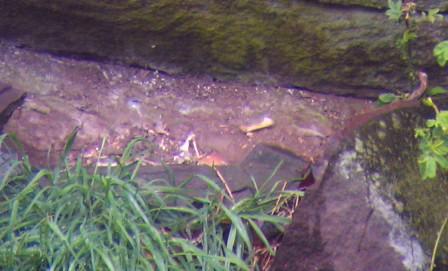Theres a storm coming
Well its fair to say its been a mixture of nerves and excitement at the peregrine watch today. Firstly, excitement as further cracks keep appearing in the egg and then seems to disappear and turn into blades of grass or peregrine poo. Nerves, as much as I want the eyass to come join us in the world outside the egg. I’m a bit concerned with the heavy storm forecast for later tonight that perhaps today was not the best day for a eyass to emerge.
In order distract myself from this emotional turmoil, I have been further distressing myself with some peregrine incubation mathematics. Basically, once a mated falcon lays her 1st egg of the season she will not completely incubate it, until the rest of her clutch is complete (usually 3-4 eggs within about a week). As I understand it, fertilisation is not complete until the egg reaches a brooding temperature of 37.3°C and must remain between 37.3°C- 37.7°C throughout the incubation period. If the egg gets to cold it will hinder development but can recover form this is correct temperature is restored quickly. However it is important not to overheat the egg. If the temperature reaches 40°C the embryo will immediately die. The peregrine parents often turn the egg in order to aid heat distribution and keep the egg well oxygenated to avoid over cooking or suffocating the poor wee thing.

So how do we know this seasons egg is going to hatch? The honest answer is we don’t, however the birds seem to believe it will so I’m sticking with them, they have a pretty good idea after all.
A better question would be; if it is going to hatch when will that be?
Back to my maths lesson, once the egg is at optimum temperature it usually takes about 32 days of incubation before the egg becomes an eyass. However in previous years, where there has been a hard winter followed by a very cold spring. Eggs have successfully hatched after a very long incubation of up to 54 days, some 3 weeks later than usual. This was the case with the Falls of Clyde pair in two consecutive years in both 2009 and 2010.
This years egg was laid on 2nd April, now 48 days ago. However due to the falcons struggle to lay a complete clutch this year, true around the clock incubation wasn’t recorded until the 29th April, 21 days ago. This means that potentially the egg may not hatch for another 10 days or so, a vaguer answer would be any day from now until the end of May.
Its hard being an egg.
Adam Murphy – Peregrine Ranger
Help protect Scotland’s wildlife
Our work to save Scotland’s wildlife is made possible thanks to the generosity of our members and supporters.
Join today from just £3 a month to help protect the species you love.
Preface
Well its fair to say its been a mixture of nerves and excitement at the peregrine watch today. Firstly, excitement as further cracks keep appearing in the egg and then …
